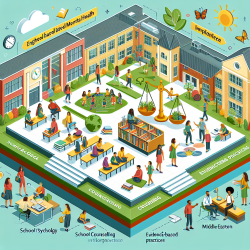Introduction: Embracing Human-Centered Design
In the realm of global mental health, reaching underserved populations is a formidable challenge. A recent study titled "Applying Human-Centered Design in Global Mental Health to Improve Reach Among Underserved Populations in the United States and India" showcases how human-centered design (HCD) can be pivotal in overcoming these barriers. The study emphasizes the importance of engaging end users in the development of digital tools, ensuring that these interventions are not only effective but also culturally relevant and user-friendly.
Key Findings: The Power of Engagement
The research highlights several key findings:
- Engaging end users in the development process ensures that the tools reflect the needs and perspectives of those who will use them.
- Technology can significantly extend the reach of mental health interventions, offering benefits like improved technical literacy and capacity-building in low-resource settings.
- Incorporating supportive mechanisms during development can help users engage more effectively with mHealth tools, especially in populations with lower technical literacy.
Case Studies: Real-World Applications
The study presents two compelling case studies:
- Refugee Families in the United States: This case study involved the digital adaptation of the Family Strengthening Intervention for Refugees. By employing a codesign methodology, the researchers were able to create a digital tool that was feasible, acceptable, and sustainable, effectively addressing the unique challenges faced by resettled refugee families.
- Community Health Workers in India: In collaboration with Harvard Medical School, an NGO in India developed a digital training program for community health workers. This program aimed to deliver an evidence-based psychological treatment for depression, demonstrating how HCD can be applied to program development, scaling up training, and capacity-building.
Implications for Practitioners
For practitioners in the field of speech-language pathology and other related disciplines, this research underscores the importance of incorporating HCD into practice. By doing so, practitioners can ensure that their interventions are not only effective but also culturally sensitive and accessible to those who need them most. This approach can lead to better outcomes for children and other vulnerable populations, bridging the gap in mental health care.
Encouraging Further Research
While the findings of this study are promising, there is a need for further research to explore the full potential of HCD in global mental health. Practitioners are encouraged to delve deeper into this approach, exploring how it can be applied in their specific contexts to improve service delivery and outcomes.
To read the original research paper, please follow this link: Applying Human-Centered Design in Global Mental Health to Improve Reach Among Underserved Populations in the United States and India.










